
After using the Samsung Galaxy S23 Ultra as our daily driver for two weeks, we share our thoughts and experiences.
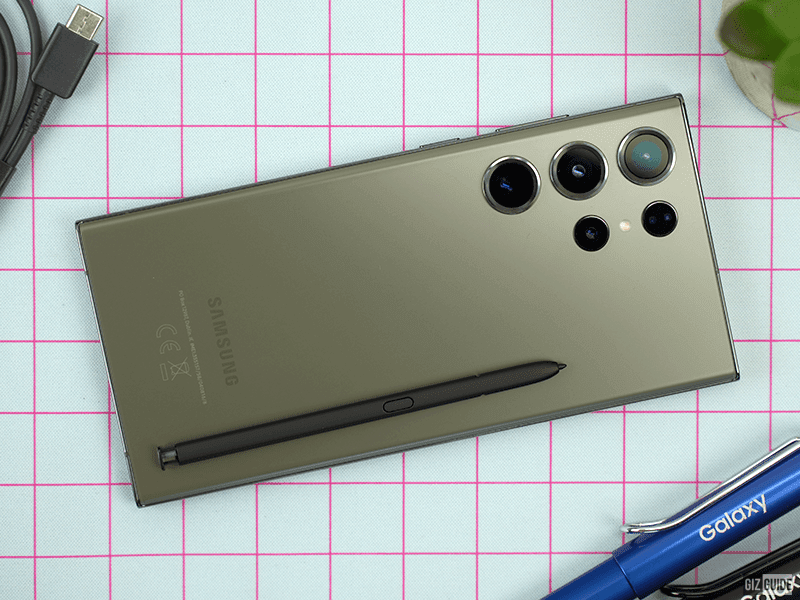 |
| With the two-tone S Pen |
To recap, the Samsung Galaxy S23 Ultra comes with a Gorilla Glass Victus 2 protected 120Hz Dynamic AMOLED 2x QHD+ screen. Inside is the 4nm Qualcomm Snapdragon 8 Gen 2 octa-core processor, 12GB RAM, UFS 4.0 storage, and a 5,000mAh battery with 45W fast charging.
At the back are the 200MP primary camera, 12MP ultra-wide angle camera, 10MP 3x telephoto, and the 10MP 10x telephoto with OIS and LED flash. While in front is the 12MP selfie camera.
In the Philippines, the Samsung Galaxy S23 Ultra starts at PHP 81,990 for the 12GB/256GB model.
Let's dive into the review!
Multimedia Experience
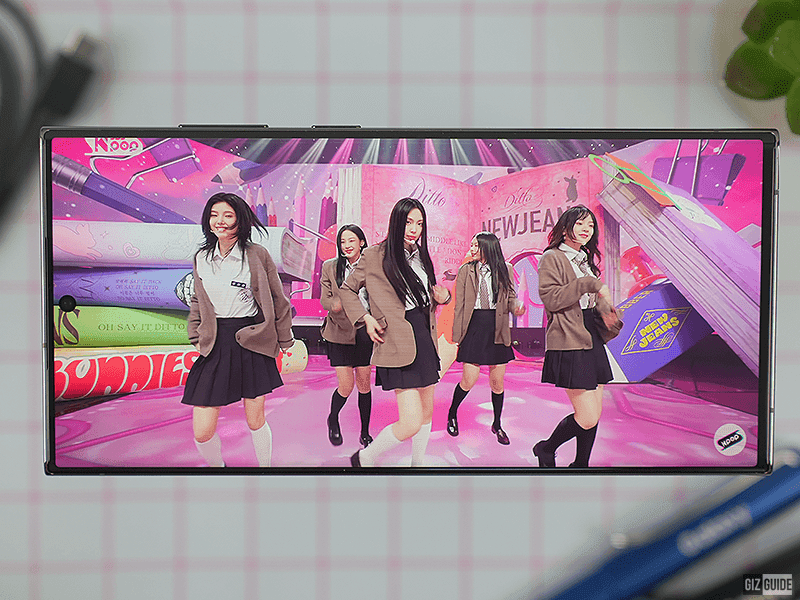 |
| Massive screen! |
In front is the 6.8-inch Gorilla Glass Victus 2 protected Dynamic AMOLED 2x screen with a 1-120Hz refresh rate, a 3080 x 1440 resolution and a 2,200 nits peak brightness. The panel is bright, vibrant, crisp, fast and responsive. Because of the boxier curve of the S23 Ultra, the display managed to look larger while having even slimmer bezels.
Under direct sunlight, the panel is readable even at just 80 percent brightness. It supports 10 points of multi-touch with a fast touch 240Hz touch sampling rate which is apparent when multitasking and playing games that require multiple simultaneous quick taps and gesture input.
On top of the punch hole is a super slim bezel that hides the even slimmer earpiece that doubles as one of two stereo speakers.
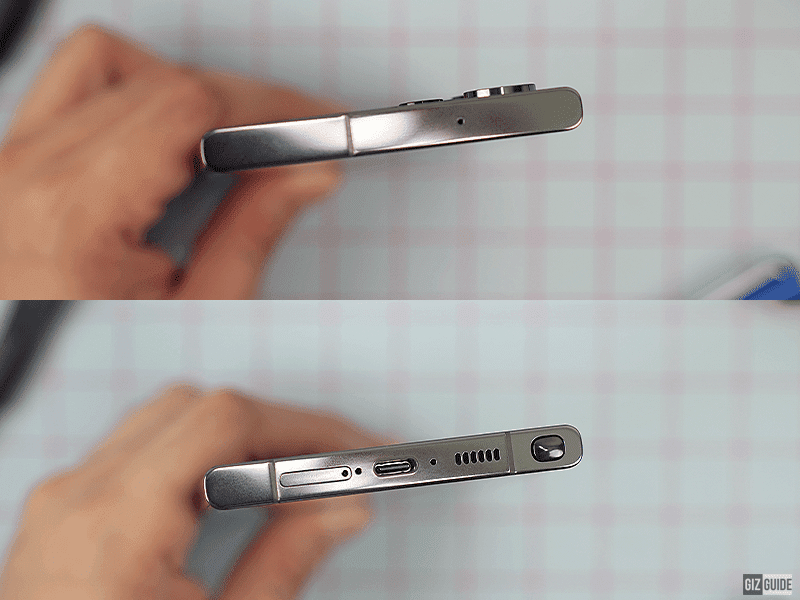 |
| Top and bottom |
For audio, the phone is equipped with a stereo set-up that is made up of the bottom-firing speaker and the aforementioned earpiece located at the upper bezel of the display.
Samsung did not highlight the improvements of the S23 Ultra's speakers but we think they should have. These are one of the best stereo speakers we've had on a smartphone to date. The difference between the previous generation is significant. Its maximum volume is way higher than most smartphones in its flagship category. Although we recommend leaving the volume at 70 percent for the best audio quality. Any higher and the sound becomes distorted. Because of the configuration of the speakers, the earpiece is on the slightly weaker side but this is a minor concern given that the stereo experience is noticeably better the previous generation.
The microphones do a great job of picking up sounds from a meter away while the noise-cancellation for calls is great too.
Cameras
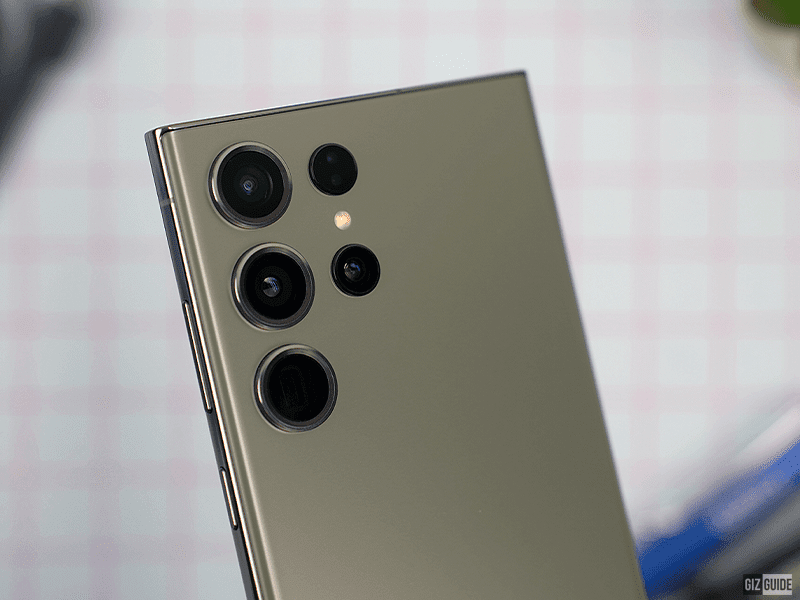 |
| Rear cameras |
As mentioned earlier, the rear camera set-up is composed of the 200MP f/1.7, 85-degrees 23mm equivalent primary camera with OIS, the 12MP f/2.2 120-degree ultra-wide angle camera, the 10MP f/2.4 36 degrees 69mm equivalent 3x telephoto camera with OIS and the 10MP f/4.9 11-degrees 230mm equivalent 10x telephoto camera with OIS and with an LED flash.
The stock camera app comes with the following modes: Photo, Video, Night, Portrait, Expert RAW, Pro, Pro Video, Food, Panorama, Super Slo-Mo, Slow Motion, Hyperlapse, Portrait Video, Director's view and Single Take.
The Pro mode comes with controls for ISO (50-3200), Shutter Speed (1/12,000-30 seconds), EV (+-2), Focus, White Balance, and zoom (Ultra-wide, 1x, 3x, 10x). The 3x and 10x zoom are optical and can reach 100x zoom digitally.
Rear Camera Samples
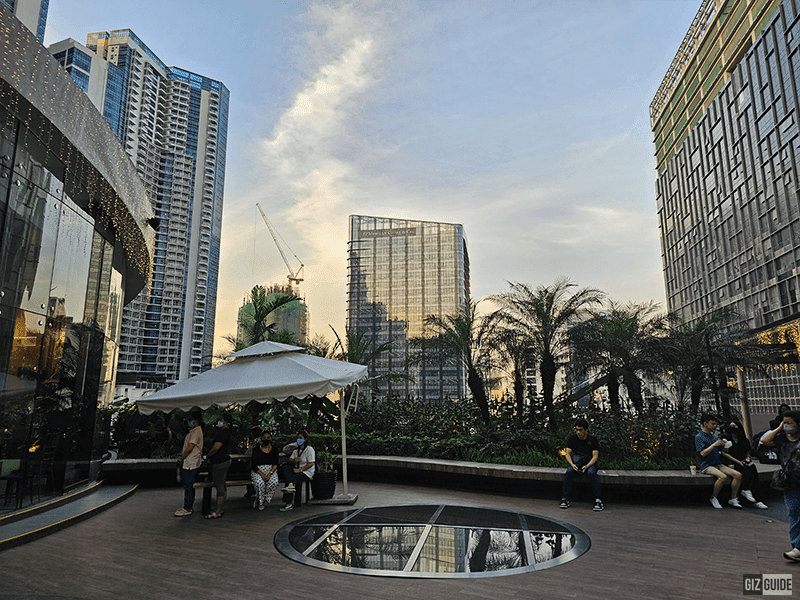 |
| Rear Daylight 1x |
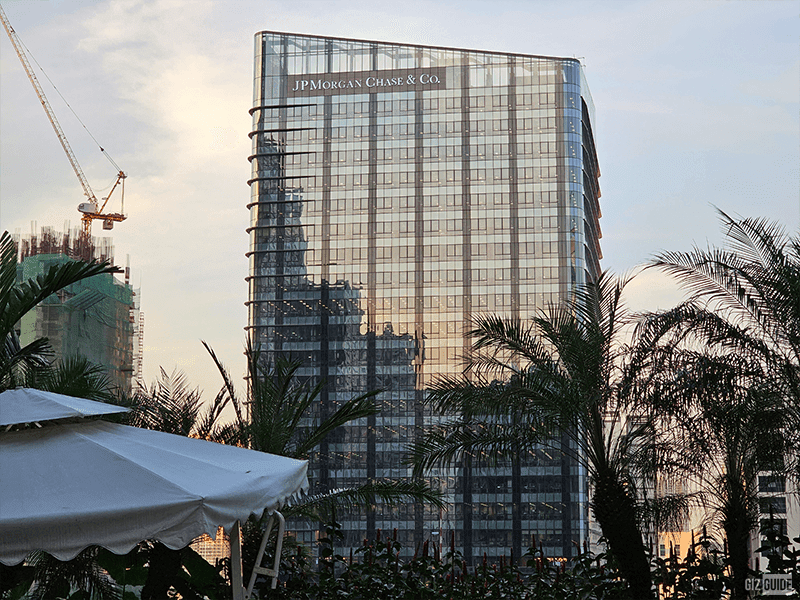 |
| Rear Daylight 3x |
 |
| Rear Daylight 10x |
 |
| Rear Daylight 100x |
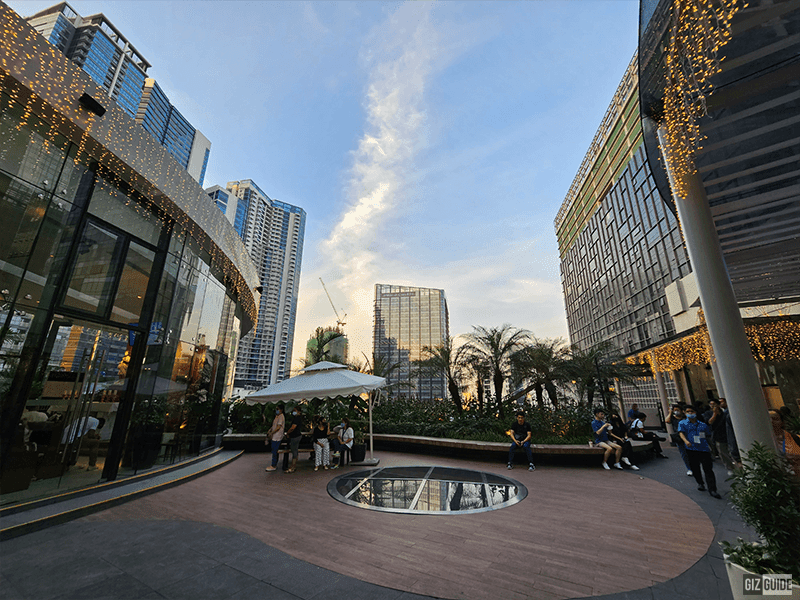 |
| Rear Daylight ultra-wide angle camera |
The primary 200MP camera does not disappoint. The image it produced is sharp and detailed with vibrant color and deep dynamic range. While the ultra-wide, 3x and 10x cameras produced decently sharp images with the same great color and dynamic range from the main camera.
 |
| Rear Close-up 1x |
 |
| Rear Close-up 3x |
 |
| Rear Close-up ultra-wide |
The 1x, 3x and ultra-wide can capture objects up close with outstanding fidelity. Images are decently sharp with good color and contrast.
 |
| Rear Indoors 1x |
 |
| Rear Indoors 3x |
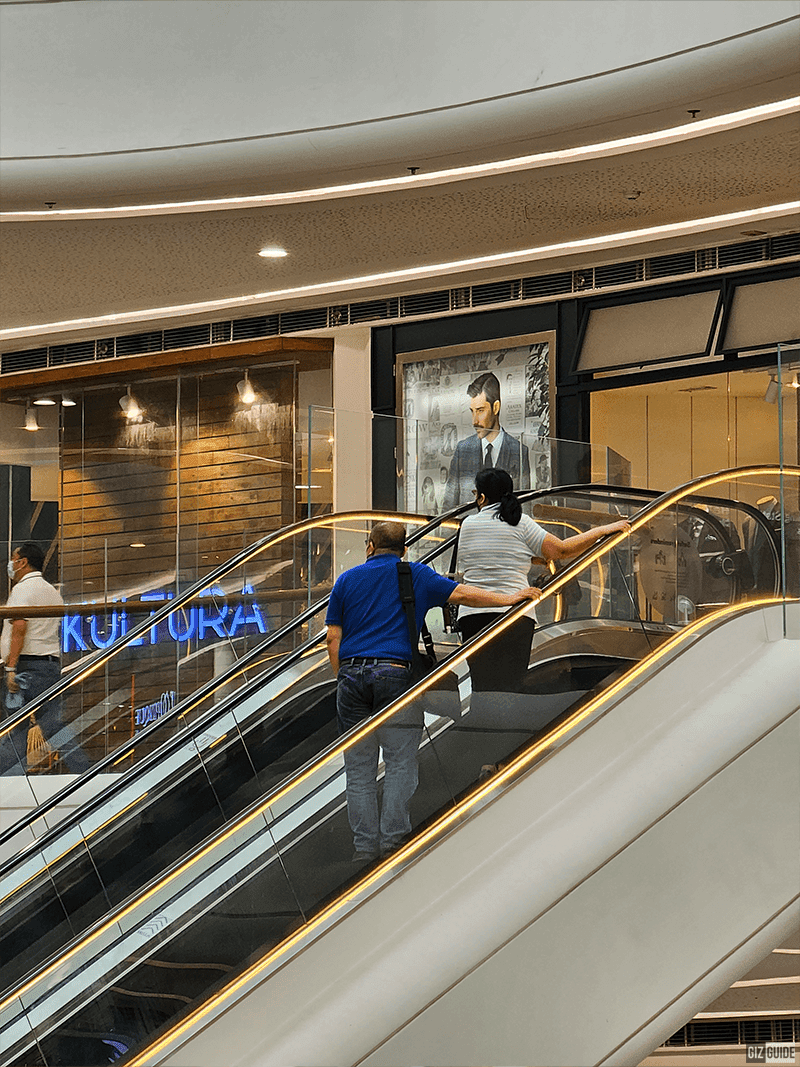 |
| Rear Indoors 10x |
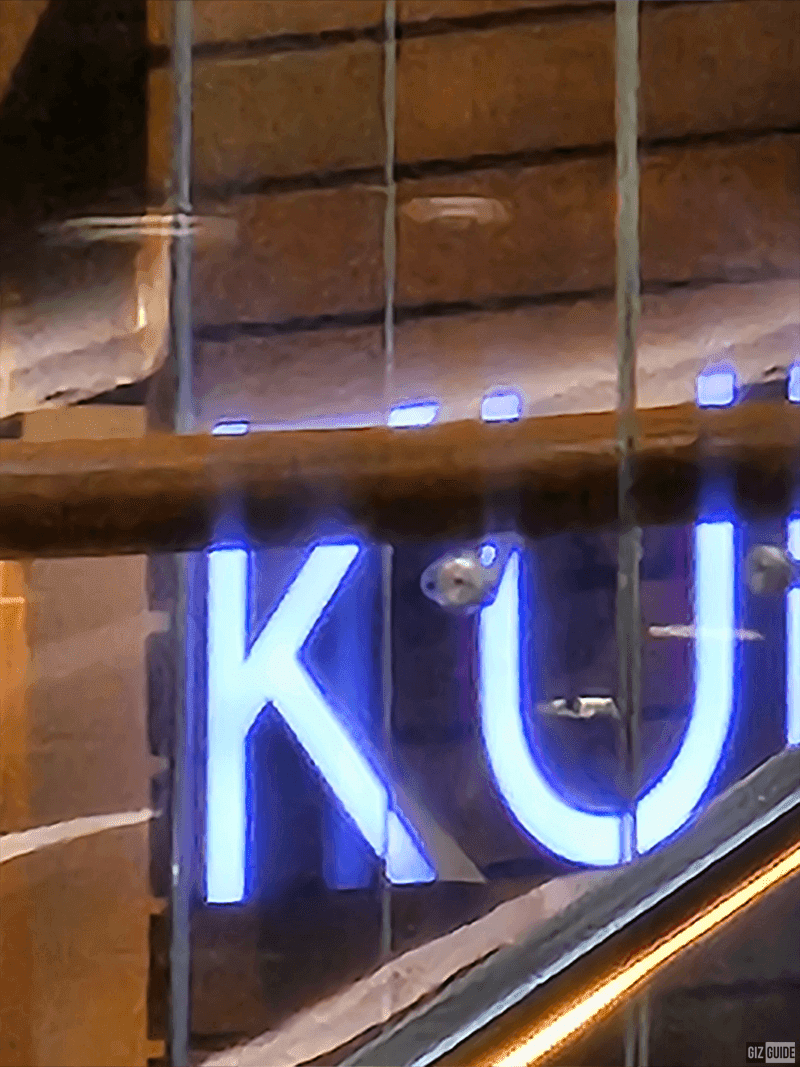 |
| Rear Indoors 100x |
 |
| Rear Indoors ultra-wide |
Indoors, the images retain the quality of daylight that are sharp, detailed, and contrasty. In this situation, the white balance is spot on.
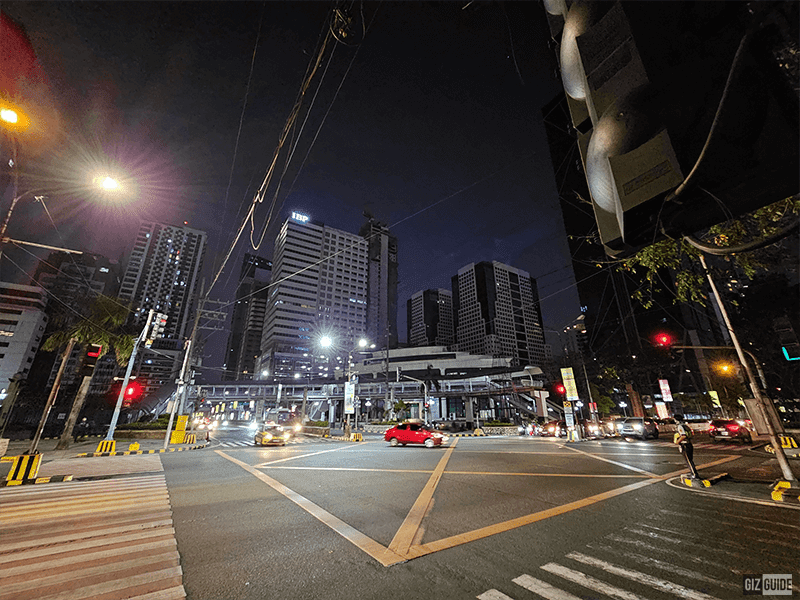 |
| Rear Lowlight ultra-wide |
For low light, the primary camera and the 3x telephoto camera produced sharp and detailed images with good color and contrast. While the 10x telephoto, 100x space zoom and the ultra-wide produced images with noticeable Noise and grain which reduces the sharpness and detail. Otherwise, the color is somewhat accurate.
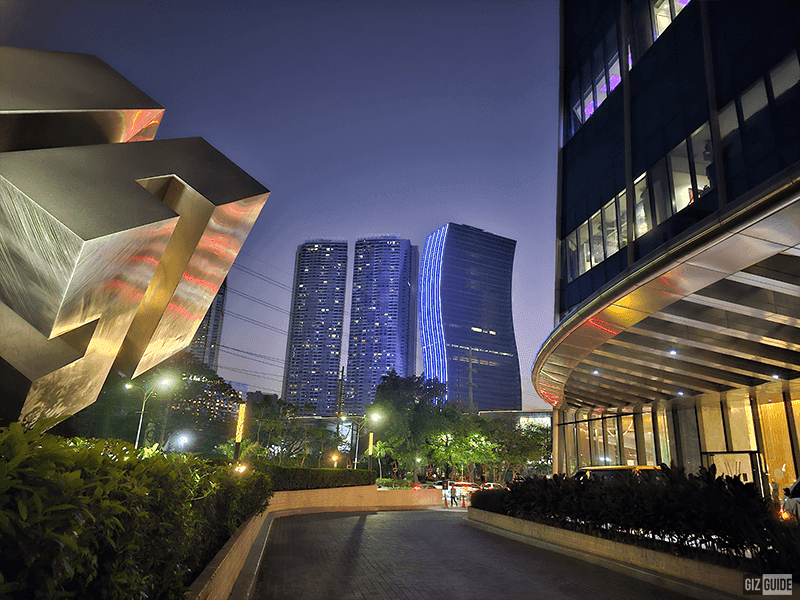 |
| Rear Night mode 1x |
 |
| Rear Night mode 3x |
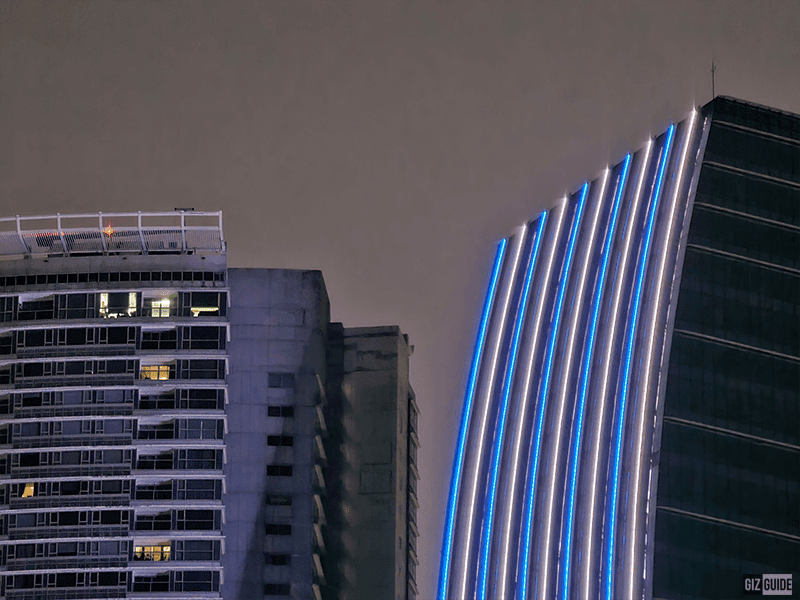 |
| Rear Night mode 10x |
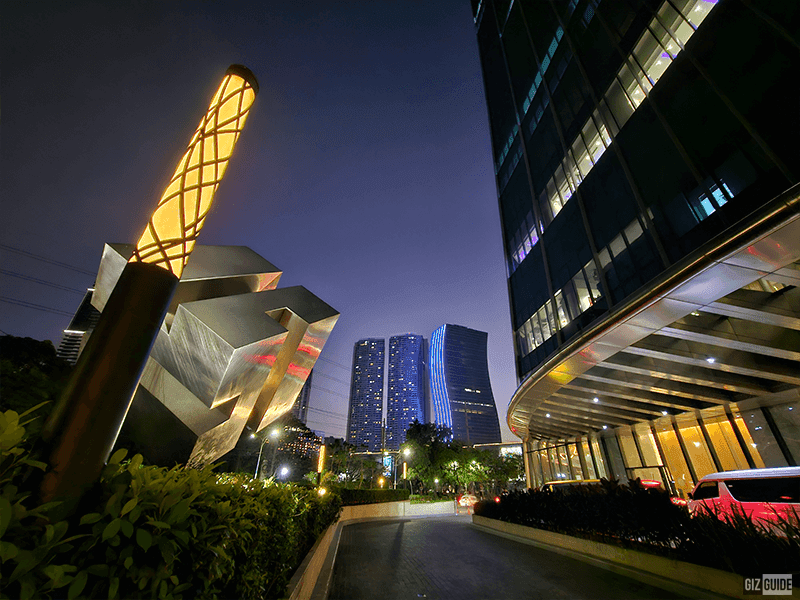 |
| Rear Night mode ultra-wide |
The Night mode significantly improves the sharpness, detail, and contrast. We highly recommend using the night mode in low light when the subject is not moving to get the best image. Space zoom is not available with the Night mode.
Overall, the rear cameras produced mixed results. The primary camera and the 3x telephoto were consistently sharp and detailed with minimal noise. While the 10x telephoto and ultra-wide were struggling with low light where noise and grain reduced the sharpness and detail.
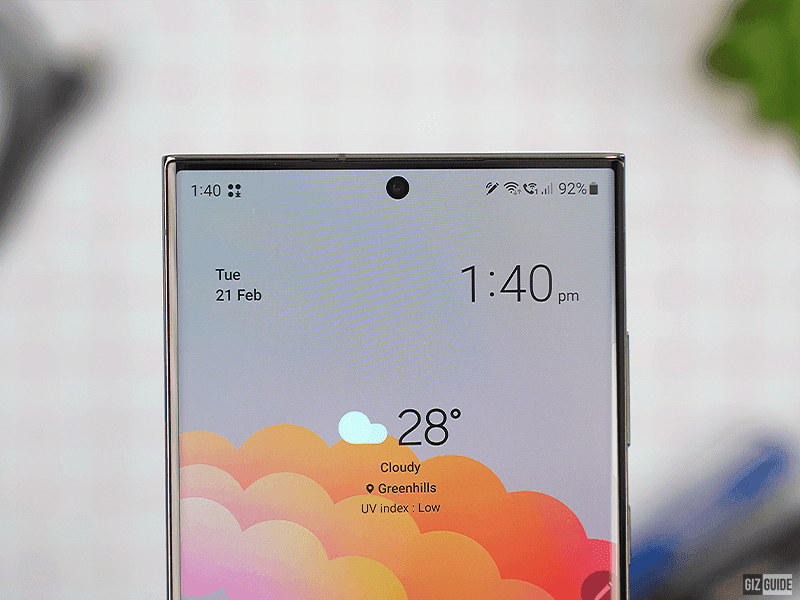 |
| Selfie camera |
On the punch hole is the aforementioned 12MP f/2.2 80-degrees 25mm equivalent front-facing camera. This is an interesting change as the previous S22 Ultra had a 40MP selfie camera. Samsung says that the new 12MP performs better than the previous generation but does it?
Most of the camera modes that work with the rear camera work with the selfie camera which is an underrated feature. You get what you pay for.
Selfie Camera Samples
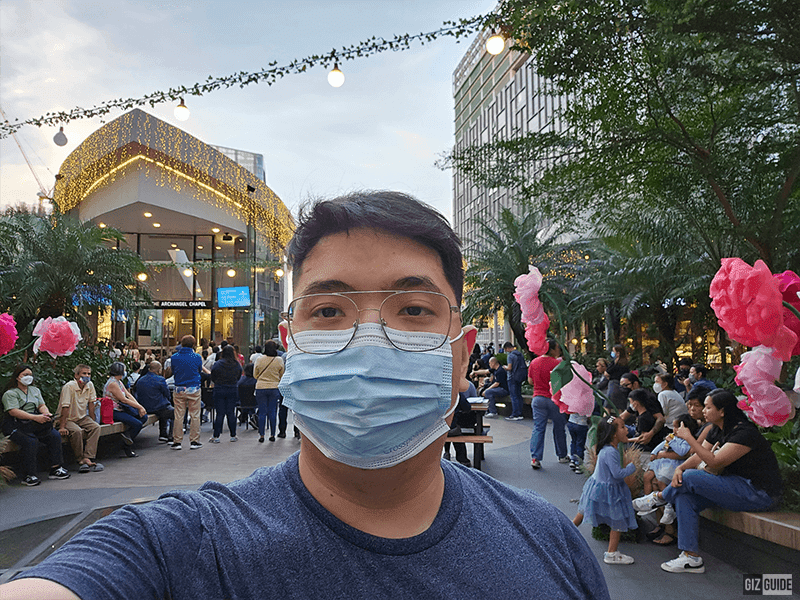 |
| Daylight selfie |
The daylight selfie is sharp enough with plenty of detail, vibrant color, and strong contrast. Our only concern is that the images are not as sharp when compared to phones in the same category.
 |
| Selfie portrait mode |
The edge detection of the portrait mode is very good but struggles with individual hair or fiber strands. Otherwise, the artificial bokeh is somewhat pleasing despite not being the most natural implementation we've seen.
 |
| Selfie portrait |
Indoors, the image has great color and deep contrast but may fall behind in sharpness and detail when compared to its peers.
 |
| Lowlight selfie |
In low light, the selfie camera's images have minimal noise however are noticeably softer and with less detail. The skin tone also took a hit.
 |
| Night mode selfie |
The Night mode significantly improves the sharpness and detail of the low-light selfie that we recommend using as long as you can stand still.
Overall, the front cameras produce sharp, detailed images with vibrant color and contrast but lose their sharpness and detail in low light despite the minimal increase in noise.
The Samsung Galaxy S23 Ultra's primary rear camera can capture up to 8K at 30 fps while all the other cameras can record up to 4K at 60 fps.
8K footage from the phone uses the full width of the sensor while offering 30 fps with an 80Mbps bit rate. The resulting 8K footage is sharper and more detailed than the 4K 60fps footage. This means there is an actual advantage, unlike the unusable 8K at 24fps from the previous generation.
4K Footage from the other cameras except for the rear ultra-wide praiseworthy. They are sharp, detailed and vibrant. The ultra-wide angle camera's footage isn't as sharp or detailed as we expect from a phone in this price range.
What we can praise about all four rear cameras is the significantly improved image stabilization which yielded smooth footage from all cameras with a minor noticeable shake.
Overall, the video performance of the S23 Ultra is a mixed bag. It improves in some areas over the previous generations but struggles in others.
Performance
 |
| AnTuTu and GeekBench |
To recap, the Samsung Galaxy S23 Ultra features a custom 4nm Qualcomm Snapdragon 8 Gen 2 octa-core processor clocked at 3.2GHz. Alongside it are the New Adreno GPU, 12GB LPDDR5 RAM and 256GB/512GB/1TB UFS 4.0 of internal storage.
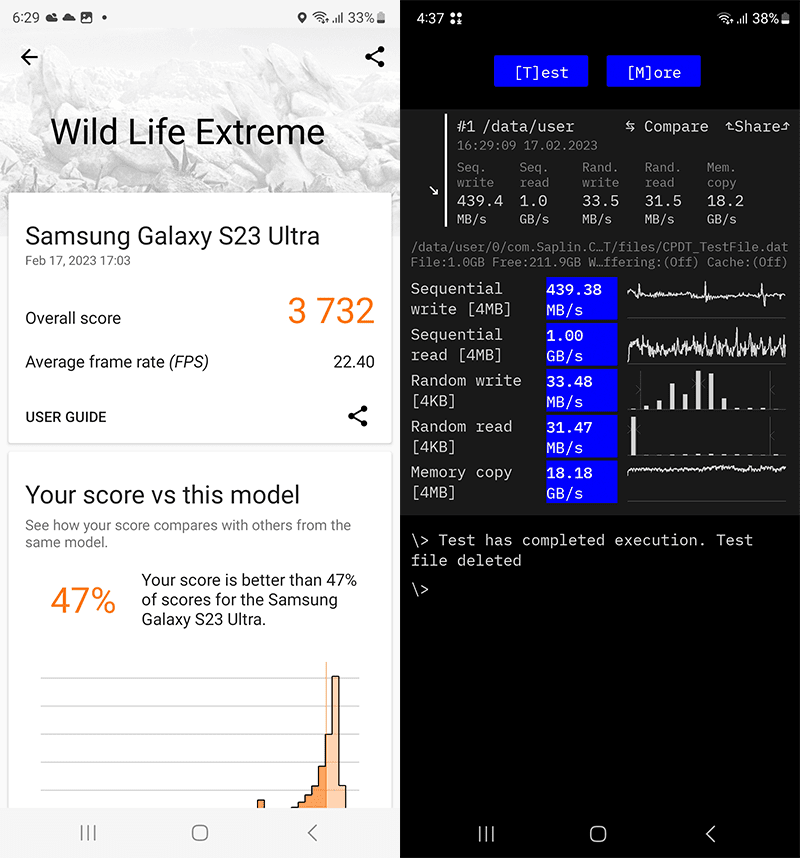 |
| 3DMark and CPDT scores |
Samsung Galaxy S23 Ultra benchmarks:
- AnTuTu - 1,182,358
- Geekbench 5 - 1,872 (single-core), 4,844 (multi-core)
- 3D Mark WildLife - 3,732 at 22.4 average fps
- CPDT - 1.0 GB/s sequential read speeds and 439.38 MB/s sequential write speeds
The Samsung Galaxy S23 Ultra's scores in AnTuTu, Geek Bench, and 3DMark are what we expect with the included specs. In fact, it slightly underperforms in AnTuTu but perform better in GeekBench (multi-core tests), 3DMark (overall & framerate) and CPDT (sequential read speeds).
Our review unit is the 12GB LPDDR5 and 512GB UFS 4.0 model. The results from CPDT are one of the fastest read speeds ever but the write speeds are not as fast as similary spec'd smartphones.
 |
| Genshin Impact Graphics |
Like most Snapdragon 8 Gen 1-equipped smartphones last year, the Samsung Galaxy S23 Ultra managed to unlock the Medium graphics settings of Genshin Impact as the default. The gameplay is smooth even when the screen fills up with objects and animations. The phone stayed cool for the first 30 minutes of gameplay but slowly warmed up. It maintained a warm temperature and never got alarmingly hot.
For security, the Samsung Galaxy S23 Ultra has an ultra-sonic under-display fingerprint sensor and face unlock. Initial set-up and subsequent uses are almost instantaneous. The face unlocks only struggles when the camera is dirty or when we are wearing a mask and sunglasses. The screen brightens up when used in the dark.
Regarding connectivity, we have the following: eSIM, NanoSIM, WiFi 6E, 5G, 4G LTE, Bluetooth 5.3, OTG, NFC, GPS, A-GPS, and GLONASS.
It is one of the few smartphones with both WiFi 6E and Bluetooth 5.3.
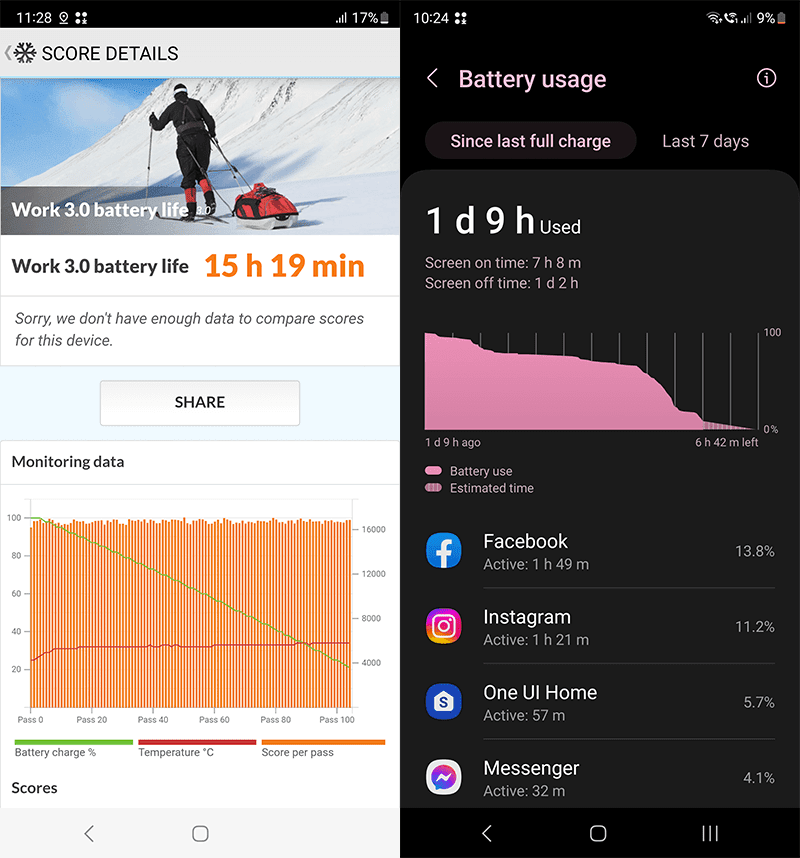 |
| PCMark Battery test and Battery usage |
Inside the phone is a large 5,000mAh battery. In our usual PCMark Battery test, the Samsung Galaxy S23 Ultra managed to endure 15 hours and 19 minutes.
In our daily use, it managed to last for more than 7 hours and 8 minutes with a 9 percent battery left. This was our daily driver that was constantly connected to either WiFi or 5G. Its battery performance is impressive. There were days where we would get 8 hours of on screen time too. It still varies depending on the user's usage.
The massive battery charges via USB-C with the 45W charger. It takes around 60 minutes to charge from 0 to 100 percent.
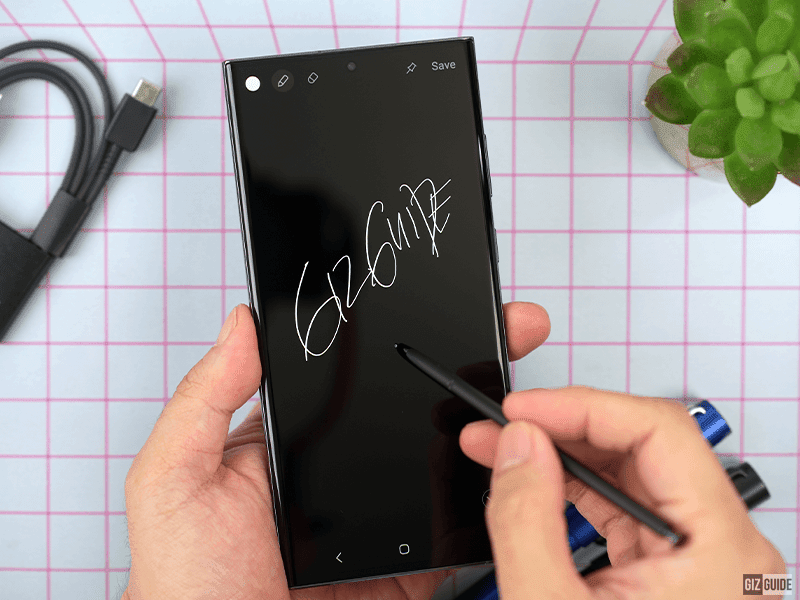 |
| Quick Notes |
It is running on OneUI 5.1 based on Android 13. Visually, it is a more polished version of the previous OneUI 5.0. It adds some new features like the smarter Gallery app. Users can now search in the Gallery app for multiple objects or people at once. The Gallery app also recognizes the faces in photos and automatically prompts the user to add them to a shared album. Samsung has also added object recognition and object separation capabilities to its gallery app. This means that users can tap and long-press an object or person in a photo. If the app recognizes the object or person, the user can copy, share and save it as a separate image.
There is a number of pre-installed apps and services that can be uninstalled. It adds to the initial setup.
Overall, OneUI remains one of the most feature-packed Android Skin out there. Samsung has been adding features that make the phone work better with Monitors, TVs, Speakers and Windows PCs. But if you never liked previous versions of OneUI, there is little to change your mind with this latest version.
Pros - Solid build, jewelry-like design, Near 36-hour battery life, S-Pen, Better device integration,
Cons - Ultra-wide camera performance is underwhelming, Visually similar to last year's,
Samsung Galaxy S23 Ultra Specs
Display: 6.8-inch Gorilla Glass Victus 2 protected Dynamic AMOLED 2X screen w/ 120Hz refresh rate, QHD+ 3080 x 1440 resolution at 500 ppi
CPU: 3.2GHz 4nm Snapdragon 8 Gen 2 octa-core processor
GPU: New Adreno
RAM: 12GB
ROM: 256GB/512GB/1TB
Back Camera: 200MP f/1.7, 85-degree 23mm, OIS + 12MP f/2.2 120-degree ultra-wide-angle + 10MP f/2.4 36-degree, 69mm telephoto OIS, 10MP f/4.9 telephoto, 230mm, 11-degrees, OIS, 10x optical, 100x zoom + LED flash
Selfie Camera: 12MP f/2.2 80-degree, 25mm
Battery: 5,000mAh w/ 45W fast charging, 10W wireless
OS: Android 13 w/ Samsung One UI 5.1
Connectivity: WiFi 6E, 5G, 4G LTE, Bluetooth 5.3, OTG, NFC GPS, GLONASS, Beidou, Galileo, dual SIM (nano), E-SIM
Sensors: Accelerometer, light, orientation, proximity, gyroscope, sound, magnetic
Others: In-Display fingerprint sensor, IP68 rating, 2x Dolby Atmos stereo speakers, USB-C, Colors: Black, Cream, Green, Violet
Dimensions: 163.4x 78.1 x 8.9 mm
Weight: 195 g
Price: PHP 81,990 (12GB/256GB), PHP 89,990 (12GB/512GB), PHP 103,990 (12GB/1TB)
Verdict
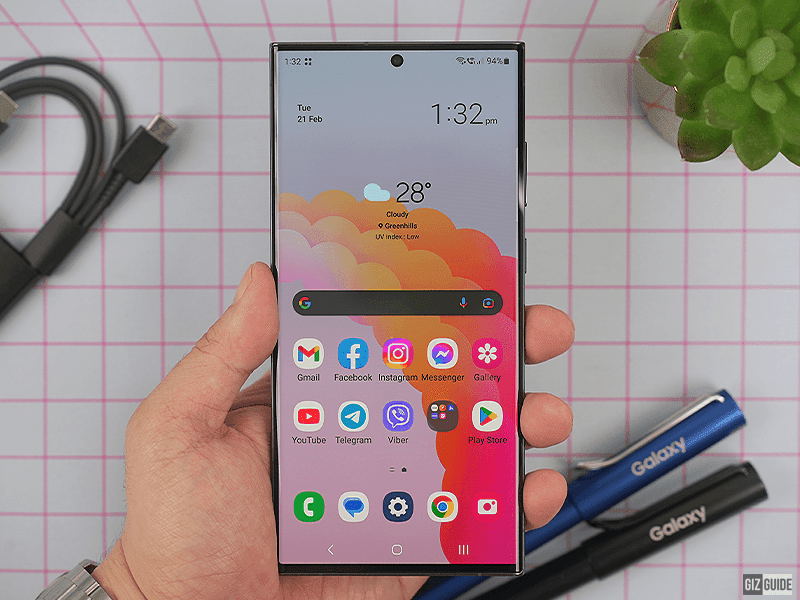 |
| Is it really an upgrade from last year's S22 Ultra? |
Samsung continues to bring solid build materials, top-notch design, and top-quality specs in one package but with an eyewatering starting price of PHP 81,990.
The new Qualcomm Snapdragon 8 Gen 2 offers powerful performance in normal tasks and gaming while offering near 2-day battery life even when constantly connected to WiFi and 5G.
Like the previous Galaxy S series, the display remains one of the better ones in the market with its fast 120Hz refresh rate, 240Hz touch sampling rate, and 2200 nits peak brightness.
But what surprised us is its class-leading stereo experience.
Other noteworthy features include DeX, S Pen, and 45W fast charging.
Where Samsung can improve the S23 Ultra are the camera performance in low light especially the ultra-wide cameras. Yes, it can capture stunning images with the main camera and it can zoom in 100x but we found images from the ultra-wide camera lesser than the previous generation in daylight and in low light.
In conclusion, at first glance, the phone may seem to have minor changes but each one of these changes is impactful to the day-to-day use of the S23 Ultra. One example is the squaring of the sides has made the phone easier to hold while allowing the screen to have a more rectangular shape which results in a better aspect ratio when viewing content.
So if you are coming from the previous generation, you may find very little reason to upgrade. However, if you are coming from three or more generations and if you look a little closer, these minor refinements will give a massively better experience in the long run.
So we highly recommend it if you own a phone that is more than a generation old or are in absolute need to buy one of the best Android phones today.
What do you think guys?
Build/Design - 4.25
Multimedia Experience - 4.5
Cameras - 4
Performance - 4.5
Average - 4.32/5


























































What are the standout features of the Samsung Galaxy S23 Ultra? Get an in-depth review of its performance, design, and features in our latest blog post by Neil Jimenez. Explore the impressive specifications, including the stunning display, powerful processor, versatile camera setup, and enhanced audio experience. Stay informed and discover the latest innovations in mobile technology at MobilezMarket!
ReplyDeletemobilezmarket.com